La noche de los asesinos: Text, Staging and Audience
Anuncio
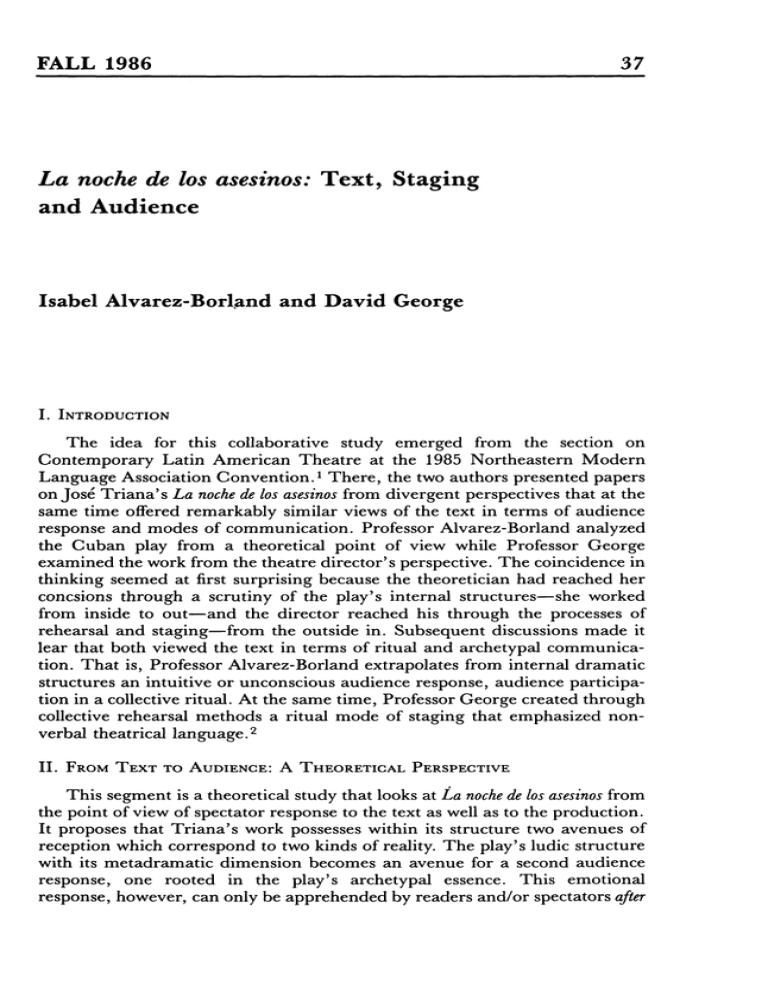
FALL 1986 37 La noche de los asesinos: Text, Staging and Audience Isabel Alvarez-Borland and David George I. INTRODUCTION The idea for this collaborative study emerged from the section on Contemporary Latin American Theatre at the 1985 Northeastern Modern Language Association Convention. 1 There, the two authors presented papers on José Triana's La noche de los asesinos from divergent perspectives that at the same time offered remarkably similar views of the text in terms of audience response and modes of communication. Professor Alvarez-Borland analyzed the Cuban play from a theoretical point of view while Professor George examined the work from the theatre director's perspective. The coincidence in thinking seemed at first surprising because the theoretician had reached her concsions through a scrutiny of the play's internal structures—she worked from inside to out—and the director reached his through the processes of rehearsal and staging—from the outside in. Subsequent discussions made it lear that both viewed the text in terms of ritual and archetypal communication. That is, Professor Alvarez-Borland extrapolates from internal dramatic structures an intuitive or unconscious audience response, audience participation in a collective ritual. At the same time, Professor George created through collective rehearsal methods a ritual mode of staging that emphasized nonverbal theatrical language. 2 II. FROM T E X T TO AUDIENCE: A THEORETICAL PERSPECTIVE This segment is a theoretical study that looks at La noche de los asesinos from the point of view of spectator response to the text as well as to the production. It proposes that Triana's work possesses within its structure two avenues of reception which correspond to two kinds of reality. The play's ludic structure with its metadramatic dimension becomes an avenue for a second audience response, one rooted in the play's archetypal essence. This emotional response, however, can only be apprehended by readers and/or spectators after 38 LATIN AMERICAN THEATRE REVIEW they have responded to the play's Brechtian and anti-illusionistic external structure. There are, of course, multiple problems in theorizing about audience response to a dramatic work. Patrice Pavis, in his excellent text, Languages of the Stage: Essays in the Semiology of Theatre, has dealt extensively with this subject, asserting multilevels and pluralities involved in responding to drama. 3 More recently, U n a Chaudhuri 4 has elaborated on Pavis' work in her discussion of the problem of addressees in drama: . . . plays are addressed to spectators through performers. Or, to put it differently, the reception of a play involves a "relay"-like process: the play is ''received" first by performers and then by spectators. Nor does the plurality of addressees stop here. Dramatic texts are also read, usually (but not always) after they have been produced (thus adding another step in the relay process, for the production experience may well alter the way texts are read)* 5 The findings and conclusions of Chaudhuri have important relevance to this analysis of La noche. By applying her criteria of a double-response structure to Triana's work, the dichotomy of the intellectual vs. the emotional response in the play can be resolved. La noche de los asesinos takes place within the Artaudian tradition: it lacks a traditional plot, forcing the reader/spectator to concentrate on mental states as well as on its structure and texture. The action or storyline takes place as a game, which by its constant repetition becomes a ritual devoid of meaning. A brother and two sisters plan their parents' murder and anticipate it by means of a sinister game in which the siblings assume twenty-three different identities. From the vantage point of the performance, as well as from the reading of the script, the spectator/reader is forced to assume a very active role as he/she is confronted with a variety of plots and subplots. The addressee of La noche must respond to the play, first, by intellectually sorting out the complexity of its story and, second, by allowing the play's nonverbal structure to operate its emotional and experiential effect on its receptors. Critical reaction to Triana's play has thoroughly addressed its first avenue of response, that is, its anti-illusionistic structure. This Brechtian response to La noche assumes that what takes place on stage has the immediate consequence of distancing the spectator, or making him/her reflect, and then intellectualize, the message of the work. From Frank Dauster's pioneering study of this play as " a desolated view of relationships between generations" 6 to Kirsten Nigro's and Priscilla Meléndez' analyses of the play's antiillusionistic structures, 7 critics have assumed a necessary separation between the action of this play and its spectators. Lalo, Cuca, and Beba have rightly been perceived not as assassins, but as victims, bent on torturing one another as well as themselves. The social reality of this play, be it a generational conflict or a metaphor of pre-Castro Cuba, becomes an avenue to an existential interpretation of the action. 8 The play is to be viewed as a conflict in which the siblings become prisoners of their own fears, hopelessly trying to exorcise their predicament by means of the murderous, repetitive game. These important critical studies, although valid in the understanding of FALL 1986 39 the play's anti-illusionistic structure, do not tell the whole story. Existing interpretations of La noche (existential, socio-historical, semiotic) never really contradict one another since all are elicited by the same paradigm within the play. In all cases, critics of this work have responded to the drama from their understanding of the relationships between victims and oppressors. The victim/oppressor paradigm, as U n a Chaudhuri has indicated in her analyses of Equus, has become quite predictable in modern drama. As she suggests, this situation is typical of many contemporary works: To promote the desired reading, Peter Shaffer has recourse to one of the most well established of modern myths: Freudian psychology. In responding intellectually to a case of madness, a modern audience will draw first upon this paradigm, the author can safely assume, evoked for them by various catch phrases and clichés strewn throughout the play ( . . . ) The process of this answer is a process of passive reading, the valorizing and mobilizing of familiar clichés." 9 Chaudhuri's conclusions regarding Equus' dramatic effects on its audience are fully applicable to our analyses of audience and reader response in La noche de los asesinos. By applying her criteria, it is possible to understand the current critical interest in the work's Brechtian structures, and the relatively few studies that examine the play's archetypal, subconscious dimensions. 1 0 In La noche, aggression and victimization between the siblings become a "familiar cliché" on which the critics can base their interpretative analyses. A brief review of the key moments of the play will illustrate the reasons for this ''predictable'' response. Act I consists of five main moments: an introduction to the murderous game; the arrival of Margarita and Pantaleón (representing the hostility of society); Lalo's admissions of his murderous intentions; his advances towards the crime; and, finally, the stabbing of the table accompanied by offstage screams indicating that the crime has occurred. This first act could be considered Lalo's game even if he is constantly interrupted by " o u t s i d e " characters: his own parents, the neighbors, a newspaper vendor, and the two policemen (all of these identities assumed by the three siblings.) Act II continues the sinister plot, but this time, the action is slightly altered as Cuca and Beba become the incriminating judges of Lalo's actions. In the course of the trial and the investigation the parents (who ostensibly had been murdered in Act I) reappear at different stages in their lives, and the siblings reappear as younger children. It is here that the parents assumed their role as victims as they speak of their own frustrations and describe their sordid life. The parents no longer appear as the cruel figures Lalo had depicted in Act I, but as victims themselves of the cruelty of others. The mother, who was married pregnant, is herself trapped by the rigidity of her social milieu as well as by her husband's abusive behavior. She feels alienated and takes out her anger by victimizing her children. The father, on the other hand, feels trapped by his wife's selfishness, is disenchanted with their marriage, and blames himself for his cowardice and fear in facing the hostility of his neighbors' opinions. The patterns of victimization and oppression acted out in the many desdoblamientos become a reversible condition in the life of the siblings and the remaining characters in the play. 40 LATIN AMERICAN THEATRE REVIEW The game's multiple changes of identity fulfill a very important role in clarifying the play's action. Not only do they provide the temporal flexibility needed to portray a variety of perspectives and hidden motivations in the lives of the parents and siblings but, more importantly, these changes of identity are central in the understanding of the play's main paradigm. By stressing the characters' anonymity and lack of individuality, the same pattern of aggression is maintained, thus erasing the border between victims and oppressors. The last line in the play, *'Ahora me toca a m í , ' , spoken by Beba, suggests this sinister game as a redemptionless and empty ritual. The above summary easily indicates the predominance in Triana's play of a familiar dramatic situation in contemporary drama, and justifies the existing analyses of the play's metadramatic and nonillusionistic structures. It does not explain, however, the play's archetypal, subconscious dimension nor its role in effecting an emotional response from its readers/spectators. The mood of violence, the central experience of this work, is conveyed in a personal way to each spectator (actors, public, readers, and theatre critics) by means of symbols and techniques within the ritual context. In an article published in 1973, Anne Murch analyzed the elements of ritual in La noche de los asesinos, concluding that the ritual action in the play served to demonstrate the individual's show of alienation, " a desacralized society made up of individuals groping for new meanings in fear and despair." 1 1 While M u r c h ' s interest in the ritual element was mostly psychological, the importance of her study lies in her identification of ritual as the essential mechanism within the play. In La noche the murderous, repetitive game becomes a symbol that operates subconsciously on the audience. A ritual's expected redemption never comes, and what we have instead is " a black mass, a pact with m a n ' s most obscure and violent instincts." 1 2 It is this negative anti-ritual that provides the "experiential" response to Triana's work." The play elicits audience participation through the inherent powers of myth and ritual; these, in turn, account for the reader/spectator's experiential response. Two related myths seem to be operating at once within the work's deep structure: the myth of rebirth through human sacrifice, as well as the myth of death and the scapegoat. In true modern fashion, Triana uses these myths to forge anti-myths. Mythical tradition tells us that h u m a n sacrifice is an act of positive benefit to mankind. Treatises on the subject by Sir James Frazer, Joseph Campbell and Carl J u n g study in detail the number of myths that deal with sacrificial death for the common good of a society. Death, in these cases, becomes the catalyst for a rebirth of the spirit. In Triana's version, however, these myths are unfulfilled since what the reader/spectator receives instead is a perversion of the original stories. The parents' sacrifice leads nowhere, while the expected benefits inherent in the myth of the scapegoat never materialize since all the characters in the play become scapegoats of one another. In Violence and the Sacred, Rene Girard gives us a fascinating perspective that perhaps can help us understand the concepts of violence and parricide in La noche de los asesinos. According to Girard, the scapegoat ritual is the means by which men expel from themselves the truth of their own violence. Thus FALL 1986 41 Girard believes that rites are used to redirect violence, which, for him, is the inescapable condition of society. 13 In Triana's play, the three siblings, as well as the parents, become at one time or another receivers of the accumulated frustration that social forces have perpetrated upon them. The victim/ oppressor paradigm operates here as a primordial image, a psychic residue which directs the receptor's unconscious response. Readers and spectators experience the play irrationally by means of the primordial image of the scapegoat. This mythical version of the victim/oppressor paradigm has little to do with the Brechtian structures that have attracted so much critical attention. The compelling power of this archetype is primarily a function of human fascination with irrational violence, an obsession which gathers within it a host of associations developed within the course of human experience. In fact, the anti-myth of the scapegoat operates subconsciously in the reader/spectator while consciously he/she is occupied in deciphering the play's multiple identities and temporal levels. The reader/spectator's reaction to the victim/ oppressor paradigm at the non-illusionistic level is constantly challenged by his/her own fascination with the siblings' pre-rational desire to assassinate their own flesh and blood. As Triana's stage directions clearly suggest, sounds are the playwright's main avenue to the audience's emotional recreation of the anti-myth of the scapegoat: La escena, a partir de este momento debe adquirir una dimensión extraña. Los elementos que se emplean en ella son: los sonidos vocales, los golpes sobre la mesa, y el taconeo acompasado, primero de Beba, y luego de los dos personajes (Beba y Cuca) en el escenario. Debe aprovecharse hasta el máximo. 1 4 Indeed, the songs accompanying the moments of tension, as well as the pounding and the noise of Cuca's heels against the floor, added to the offstage screams of the murdered, produce an eerie feeling which constantly plays on the spectator's emotions. At the same time, and in a very Artaudian fashion, the violence which culminates in the death ritual/game is powerfully suggested by persistent symbols directing the spectator/reader towards a pre-rational response to the action. Lalo's knives are the main symbol in the play since their presence on stage, and the noise produced by their sharpening, direct and affect the audience's unconscious response: "Este acto, aparentemente simple, debe ir creando, acompañado de los sonidos emitidos por el propio Lalo, un climax delirante." (158) Finally, the repeated allusions to large quantities of blood, (in Lalo's case, a blood bath)—"estás embarrado de pies a cabeza" (176)—, as well as the references to the pool of blood left on the floor after the m u r d e r — " A h o r a hay que limpiar la sangre," (167)—, recreate the mood of raw violence and become essential to the reader/spectator's personalized experience of violence. It is important to realize that this blood is never seen on stage, thus indicating the playwright's desire to appeal to his audience's imaginative and suggestive powers. 1 5 Similarly, it must be noted that the act of murder never takes place 42 LATIN AMERICAN THEATRE REVIEW on stage; it therefore becomes an ominous, invisible presence during the first and second acts. Triana's representation of archetypal violence is thus realized by means of a skillful blending of the visual and the imaginary, Artaudian concepts that demand much more than the sheer intellectualization of ideas. III. FROM T E X T TO STAGING: A N APPLIED PERSPECTIVE In 1984 David George staged La noche de los asesinos with theatre students from the University of São Paulo Escola de Comunicações e Artes (ECA). 1 6 This segment of the article examines the ways in which the director sought to communicate with audiences on unconscious levels by manipulating the work's archetypal dimensions and multiple structures, which in his view are based on children's games and rituals. 1 7 He applied Mircea Eliade's definitions of ritual to the production. According to Eliade, in archaic or traditional societies rituals are a means of reinforcing collective values; their purpose is both sacred and social. Latin American societies, especially those with a strong Indian or African infleunce, have to a large degree maintained their archaic or traditional character. In such societies Indian and African ritual and magic play an important role. It is not surprising, then, that many contemporary Latin American writers, Triana among them, have incorporated into their works magic-ritual themes and structures. George speculated for the purposes of staging that José Triana in part based the structure of La noche de los asesinos on Afro-Cuban magic, or santería.18 Triana may have had santería in mind as the model for the secret ceremony that informs his play, a ritual structure with which a Cuban audience might identify. This notion was especially useful to George, because Afro-Brazilian magic, known as macumba or candomblé, is a vital, growing force in Brazil. Audiences there could identify in their own minds the ceremonial aspects of the play with ritual practices in their society. Both the structure of the play and the nature of Brazilian society, then, led the director to stress ritual and ceremony in the production. One of George's basic assumptions has been that Triana's text suggests a ritual vision and way of working that correspond in great measure to the antirealist and archetypal traditions of certain theorists and practitioners, notably Antonin Artaud, Jerzy Grotowski, Peter Brook, Robert Wilson, José Celso Martínez Corrêa, and Antunes Filho. 1 9 The director applied to his Brazilian staging of La noche two basic principles based on those theatrical approaches and on his own experience. The first principle is distortion or destruction of the illusion of reality. In such a context the actor need not play a role according to the psychological and physical limitations of everyday life, although such " a c t i n g " is not entirely excluded. Actors in anti-illusionist theatre may fly, transform themselves into a sequence of different characters, and even metamorphose into machines or animals. 2 0 The second principle refers to the role of the director. Traditional, realist, and commercial methods of staging usually call for a director who will "adjust" or harmonize the text—whose integrity he must respect wholly— with the various elements of production: lighting, set, psychological charac- FALL 1986 43 terization, and so forth. T h e traditional director's objective is to reconcile the other elements to a verbal structure that must remain in the foreground. The director working within an anti-illusionist, anti-realist mode, however, seeks a theatrical language in which the verbal structure is no more important than the other elements. It is a question of transforming the text into a directing or working script and of recreating the play with visual, auditory, and verbal images. The director in this case often attempts to communicate, through ritual, on the archetypal levels of the collective unconscious. He/she may create, in collaboration with the actors, images that communicate not only the essence of the text's verbal structure by his/her—and the actors'—vision and reinterpretation of the text. A fundamental technique utilized in this recreation is improvisation, utilized extensively in the EC A production (see below). With those principles in mind, the director began rehearsals at the University of São Paulo. Fifteen students participated initially, most of whom wanted to act in the play. O n e may ask what the director would do with so many actors in a play with only three characters. The answer is that the siblings in Triana's text represent at the same time three generational levels, and by assigning specific groups of actors as children, adolescents and adults, the director could emphasize those levels. 21 T h e use of a large group of actors also made it possible to establish a collective approach in the rehearsal process and in the subsequent production. The first phase of the collective method was to develop a one-hour warmup to begin each rehearsal and eventually each performance. The warm-up takes the form of a collective ritual and is essential to establish group integration. The director teaches the actors a series of exercises for stretching, movement, strength-building, breath, and voice. T h e exercises must be practiced until ritual perfection is achieved. T h e actors carry out each component of the warm-up as if they were a single body. The warm-up is a passageway from the everyday to the world of theatrical creation. The collective method also serves to test and develop ideas that will be used in the production itself. T h e EC A students, for example, improvised a music and dance ritual, which they continued to refine throughout the rehearsal phase and eventually developed into a key scene in the production itself, described below, a scene that was both climax and epiphany. Near the end of the second-act trial scene of Triana's text, the mother, played by Cuca, appears as a witness. She confesses that she did a terrible thing. She accused Lalo of stealing the grocery money, for which he received a severe beating from his father. In fact, she herself had taken the money to buy a new dress. At this point, the director inserted in the production the magic ritual that the actors had improvised collectively. The ritual scene began with a black-out on stage; the daughter/mother was illuminated by a single flash-light, so that only her face appeared during the confession, as if suspended in the air. The flashlight went out and the sound of drums was heard from offstage. Five of the actors suddenly became visible, illuminated by tightly focused circles of light in different colors: red, blue, amber. They began to twirl slowly, like dervishes. T h e music became stronger and more instruments joined the drum beat: bells, coconut shells crashed against the stage, a clarinet playing a few plangent notes and soon joined by a 44 LATIN AMERICAN THEATRE REVIEW single voice, a child's cry. The mother wandered among the figures whirling ever more rapidly until she herself became possessed, her body seized by the forces unleashed and whirled around like the others. The music reached a crescendo and the bodies whipped about in a near frenzy, at which point the music stopped abruptly. Only a single bell could be heard as the bodies wound down to stillness. The ritual choreography functioned as a counterpoint to the mother's lies and the injustice she provoked. The ritual was the collective response to the greater injustice that the lies symbolized: the parents' cruel repression of their three children. One could say, in reference to Eliade's interpretation of ritual, that George intended the scene to represent a sacred or magic ceremony, a reinforcement of collective values, in this case the solidarity of the siblings in the face of repression. The ritual choreography therefore served as a kind of epiphany by revealing one of La noche de los asesinos} central metaphors—the secret ceremony—and externalizing what professor Alvarez-Borland calls the play's "essential mechanism," its internal ritual structure. The ritual performance was a response to the problematic set forth in Triana's text, which Professor Alvarez-Borland and others describe as a "black m a s s , " an " a n t i - r i t u a l . " Cuca, Beba, and Lalo attempt to find a way out of the oppressive confines of their lives through ritualistic play. Their games, however, reproduce the structures they wish to destroy and become the lowest level in a hierarchy of repression. The characters in the play act out a series of events whose form is that of children's games, but whose content is sinister: murder, investigation, and trial. But in reality nothing happens. It is all a game of make-believe. The siblings, the adult-adolescent-children, play the roles of their parents in the game, but the parents themselves never appear. They are the external, unseen oppressors. We are told often in the play that this particular "noche de los asesinos" has taken place many times in the past. The games of murder, investigation, and trial have been played over and over. In these apparent acts of liberation, however, the three only end up oppressing and destroying each other. It is an enclosed, circular, and self-destructive revolution, an empty set of rituals, based on words rather than acts. The ritual staged by the EC A students, however, countered the text's empty ritual with a ceremony that suggested the possibility of redemption, at least of catharsis. The ritual scene, finally, had aesthetic and emotional impact; it communicated to the audience multiple meanings on cognitive, emotional, and archetypal or unconscious levels. It corresponded to the essential nature of the group's own collective process and method of staging the play. Through the collective ritual approach the group began to work on—and against—the play itself. During the rehearsal phase, George conducted a series of improvisations that related to basic themes and climates present in Triana's test and were designed to test and illuminate specific scenes. From those improvisations the group created several nonverbal scenes for the production in order to enhance the work's climate of ritual, magic, mystery, and violence, and at the same time to bring out the text's childlike humor toward and mockery of the FALL 1986 45 repressive adult world. The set and lights for the EC A production, designed by David George, reinforced that climate. The central idea was to create for the audience from the outset an indelible image of mystery and magic by means of a total theatrical language, beginning with the set. To suggest the stultifying confines of the basement in which the action takes place, assorted j u n k was piled extreme stage right and left: old paintings in kitsch styles, broken bits of furniture, assorted pieces of clothing, candles of various sizes and shapes, mirrors to reflect set and action from different angles, yellowed magazines and books, and old toys of all kinds, particularly stuffed toy animals placed in grotesque poses. Immediately to the left of stage center were a table and chairs which would be moved to the center for the second-act trial scene. What dominated the set, however, were curtains that stretched across the extreme upstage area in a long curve. They were handstitched patchwork, in tones of grey and brown, an expressionistic exaggeration of the sort of curtains that children put up for their play theatres. The curtains emphasized La noche's metatheatrical dimensions. The opening scene, in conjunction with the set, further reinforced the climate of mystery and violence. When the house lights went down to start the performance, two visual images appeared before the audience. One light remained in the midst of the darkness, an amber spot illuminating a large stuffed toy, a green frog, hanging high above the stage, a sinister image of child's play. The amber spot dimmed and focus shifted to an unsuspected stage area behind the children's curtains. There, a huge altar of burning candles could be seen through the now transluscent curtains, which suggested a secret ceremony and conveyed the notion of a reality beyond the visible and concrete, the world of the unconscious. The altar shining through the curtains broke down the normal sense of spatial relationships; it seemed to exist in a place without boundaries. The stage was in silence. Then, a voice whispered, "assassino," and a flashlight snapped on from behind the curtain. Again the word "assassino" was heard, this time in a sing-song child's voice, and another flashlight was turned on. Subsequently, more voices joined the "assassino" chant and more lights flashed on and moved across the curtains in shifting patterns. Slowly, the actors filed out to the main stage area, shone the beams on the blades of machetes they all held, and moved toward the audience. The chant increased in volume, accompanied by the rapid beat of a drum. When the actors reached the upstage area they played the lights over the faces of the audience. The "assassino" chant reached its peak and abruptly stopped. Three actors' faces were illuminated by the flashlights while the others filed offstage in the silent darkness. The three actors spoke the first lines of the play, as written in the text. 22 The opening scene established what Professor Alvarez-Borland has defined as " t h e mood of violence, the central experience of this work "communicated within the ritual context." An original scene in the staging exemplifying childlike mockery of the adult world was based on a passage in the text in which Cuca, playing the role of the mother, appears before Lalo and responds to his statement that he has been reading a magazine with accusations and threats of punishment. The scene was performed by having Lalo enter the stage with a copy of an erotic 46 LATIN AMERICAN THEATRE REVIEW magazine. He looked around, seeking some activity, with mischief in his eye. He noticed a large stuffed toy dog lying in a heap. He picked it up, and through pantomime indicated that the dog had whispered in his ear. T h e animal seemed to make a shocking request which Lalo refused vehemently. But the dog threatened him and he relented. They read the magazine together and became sexually excited. The stuffed animal began to masturbate, at which point Cuca/mother burst upon the scene. This absurdist visual rendering of a minimal verbal cue emphasized the themes of adolescent sexual play and mockery of the adult sense of propriety. It also provided motivation for Cuca/mother's false accusation and angry threats. A few audience members were outraged, some were embarrassed, but most laughed raucously and immediately understood the scene's meaning. Mixed responses, in fact, characterized critical and audience reaction to the entire production. In general, the production was successful with audiences and critics, although there were those who hated the iconoclasm of the reinterpretation, who were opposed to the use of more than one actor per role and to the addition of dance rituals and other scenes that departed from Triana's stage directions. 23 Most theatre critics and audience members, however, responded positively to the production. 2 4 Playwright-critic Timochenco Wehbi wrote that the production utilized, " i n the best way possible, the expressive potential of the participants," while at the same time it provoked on the part of the audience "reactions of both hate and intense appreciation." Wehbi felt that the production represented a new reading of Triana's text: " T h e murderous children, dialectically, play-kill, fight-dance, spit-smile, as do most children throughout the world. There is neither good nor evil, God nor devil, only the fulfillment of their natural desires." 2 5 Journalist and critic Waldimir Soares was also enthusiastic about the first act: " T r i a n a ' s text ( . . . ) lends itself to spectacular exercises in creative staging. [The director] has understood that possibility and he splits open the text, making several actors live each character, breaking with time, space, and other rules of theatrical coherency. He reinvents the text and creates an ingenious and intriguing spectacle." Soares stated that the second act, however, mitigated the strength of the first with its tone of debauchery and low farce. 26 Art critic António Gonçalves Filho expressed surprise that critics and previous stagings of Triana's work in Brazil had focused exclusively on the political dimensions, especially those of the trial scene. H e wrote that the EC A production had avoided that error while "expanding Triana's intentions and presenting an engaging discourse against established order." Gonçalves Filho praised particularly the "vigor and rigid construction ( . . . ) full of magnificent m o m e n t s . " 2 7 Finally, one offended critic accused the "demented gringo" director of assassinating the author and of using in the production "all the clichés of the modern stage." 2 8 Those varied responses from audiences and critics would seem to indicate that the director's objective of communicating on unconscious levels was realized. The staging gave rise to strong positive and negative reactions, in some cases within the same individual. Few were neutral or indifferent. The ardor of some audience members and critics—"ingenious spectacle," " i n tense appreciation"—and the uncompromising severity of o t h e r s — " h a t e , " "demented gringo"—suggest that the production touched a deep chord. FALL 1986 IV. 47 CONCLUSION Although some readers of this study might argue that any representation is a subjective act, since it is always colored by the director's prejudices and perceptions, an interpretation which takes into account the elemental patterns of ritual sacrifice deserves closer scrutiny. Director George's account of his production demonstrates the richness and the theatrical possibilities of Triana*s piece. George and the EC A students recreated Triana's play. Besides the ritual described above and the nonverbal scenes, the director added a musical score of Brazilian music, as well as jazz, rock, and classical modes. The students themselves played the music and even composed some original pieces. The director also expanded on Triana's stage directions by adding a wide variety of sounds throughout the production to enhance the aura of violence and the sense of ritual. The archetypal and ritual recreations of various scenes clearly point towards the possibilities provided by Triana's script. Moreover, the director's reliance on the language of gesture and movement, and the use of inanimate objects such as the stuffed toys, are fully appropriate to Triana's own stage directions and his insistence on the creation of an atmosphere of violence. La noche de los asesinos presents itself as an assemblage of santería ritual, archetypal myth, and Brechtian distancing devices. While it could be argued that George's production minimized the Brechtian effect by focusing on magic and visceral response, his version of the play is, nonetheless, useful in our understanding of the play's pre verbal structures. College of the Holy Cross and Lake Forest College Notes 1. Hartford, Connecticut, 27-30 M a r c h . 2. David George staged T r i a n a ' s play with theatre students from the University of São Paulo. 3. Pavis, Patrice. Languages of the Stage: Essays in the Semiology of Theatre (New York: Performing Arts, 1982). 4. U n a C h a u d h u r i , " T h e Spectator in D r a m a / D r a m a in the Spectator," Modern Drama 27/3 (Sept. 1984): 281-299. 5. C h a u d h u r i 283. 6. Frank Dauster, " T h e G a m e of Chance: T h e Theatre of José T r i a n a , " Latin American Theatre Review 3/1 (Fall 1969): 3-8. 7. Kirsten Nigro, ilLa noche de los asesinos: Playscript and Stage E n a c t m e n t , " Latin American Theatre Review 11/1 (Fall 1977): 45-59; Priscilla Meléndez, " E l espacio dramático como signo: La noche de los asesinos, " Latin American Theatre Review 17/1 (Fall 1983): 25-35. 8. Julio M i r a n d a , "José T r i a n a o el conflicto," Cuadernos Hispanoamericanos 230 (1969): 439-444. 9. C h a u d h u r i 289. 10. Matías Montes H u i d o b r o , in his Persona y máscara en el teatro cubano (Miami: Universal, 1973), approaches this subject from a different perspective and purpose. 11. Anne M u r c h , " G e n e t , T r i a n a , Kopit: Ritual as 'Danse M a c a b r e , ' " Modern Drama 15/4 (1973): 369-381. 12. M u r c h 379. 13. R e n é Girard. Violence and the Sacred, trans. P. Gregory (Bait: J o h n s Hopkins U P , 1977) 306. 14. José Triana, La noche de los asesinos, in 9 dramaturgos hispanoamericanos, ed. Dauster, Lyday, and Woodyard (Ottawa: Girol Books, 1979) 178-179. 48 LATIN AMERICAN THEATRE REVIEW 15. T h e physical presence of blood on stage would be inconsistent with the imaginary nature of the murder, and in contradiction with the play's ludic essence. 16. In Portuguese, A noite dos assassinos. 17. Except for some cutting, Professor George did not alter the text's verbal structures. 18. Santería thrived in pre-revolutionary C u b a and persists even today in spite of the government's attempts to relegate it to the status of a folkloric mode and to discourage it as a religious practice. 19. Although La noche de los asesinos has seen n u m e r o u s stagings in LA, Europe and the U S , it is often mounted within the realist-naturalist theatrical tradition, as a psychological melodrama. In other cases directors emphasize its ideological dimensions, and seize u p o n its metatheatrical structure to create a consciousness-raising context; that is, the work is presented in a Brechtian manner. 20. Clearly, anti-illusion relates as well to the Brechtian manner, in which the illusion of reality is destroyed to produce alienation or the V-effect. Although the director did not discount the question of rational awareness on the part of the audience, he was more interested in breaking with realism in order to communicate with the audience on unconscious, archetypal levels. 21. La noche de los asesinos' generational split may be interpreted in historical-ideological terms. T h a t is, C u b a in the 1950's and by extension other Latin American nations exist simultaneously in different time periods. While they are burdened with the anachronistic structures of colonialism, they are as infants in the development of their independent histories. Like adolescents, they are in search of an identity. 22. L A L O — C i e r r a esa puerta ( . . . ) U n asesino. U n asesino. C U C A — ( A Beba) ¿Y eso? BEBA—( . . . )La representación ha empezado. (139) 23. After the initial performances at the University of São Paulo a m a t e u r theatre festival— Festival do S E S C — , where the production won awards for best lighting design and best music and second place in the category of best staging; at the national a m a t e u r theatre festival; and at other local festivals. T h e production toured u n d e r the sponsorship of the São Paulo Ministry of Culture. 24. These observations regarding audience response to the E C A production are based on the following evidence: public and private discussions with audiences during the tour of the production, as well as the audience's own nonverbal reactions. After most of the performances, for example, the actors received standing ovations. O n the other h a n d , some audience members walked out of a few performances. 25. Timochenco Wehbi, " O teatro da escola, fora da escola," Jornal do Oitavo Festival do Teatro do SESC 13 J u l y 1984. T h e translations of this and other reviews are Professor George's. 26. Waldimir Soares, " O s assassinos estão à solta, mas só no segundo a t o , " Jornal. 27. António Gonçalves Filho, " U m a noite para ser l e m b r a d a , " Jornal. 28. Robson C a m a r g o , " O assassinato do gringo d o i d o , " A Folha de São Paulo 13 J u l y 1984. C a m a r g o utilized the word " g r i n g o " several times in his review. In an open letter to the SESC Festival, one participant accused the reviewer of xenophobia and provincialism.

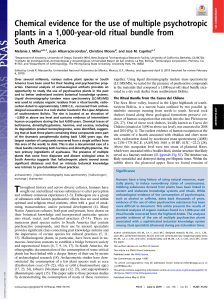
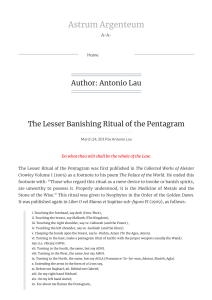
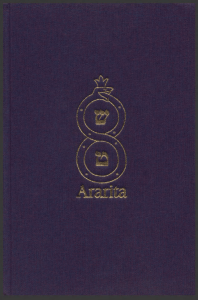
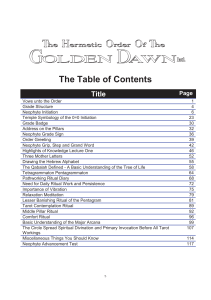
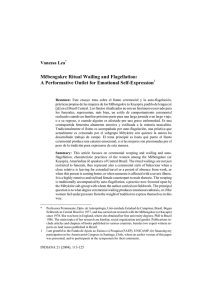

![[Gordon Winterfield] Demons of Magick Three Prac(z-lib.org) (1)](http://s2.studylib.es/store/data/009388901_1-75671f0898d8930080c7c138d53d967b-300x300.png)